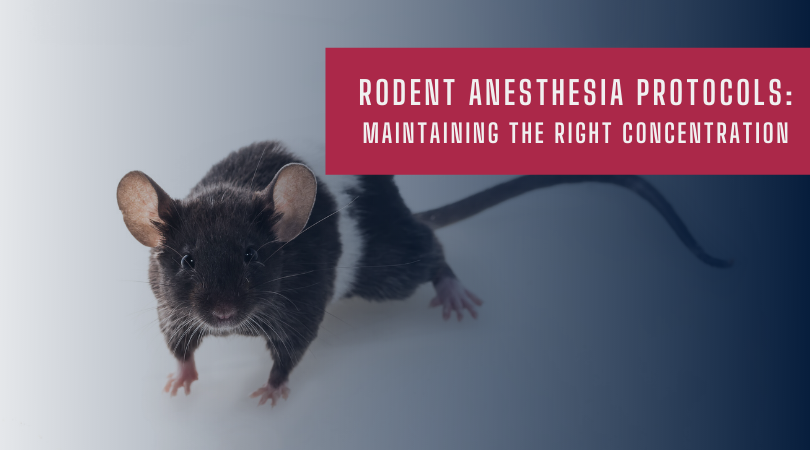Rodent Anesthesia Protocols: Maintaining the Right Concentration
Posted on
Surgical procedures are governed by strict rigorous controls, but the specifics of anesthetic induction are surprisingly nebulous. There are three overarching classes of agent used to induce animal anesthesia: volatile substances; injectables like ketamine; and local anesthetics.
 Animal research labs make routine use of inhalant anesthetics, typically isoflurane, to sedate specimens for operative procedures. The volatile group is preferred as it is easier to control, and the chemical agents quickly clear from the body. It is subsequently the safest and most controllable method of inducing a loss of consciousness in the animal and removing its perception of pain. Administration of aerosolized anesthetics is also relatively simple - provided users have the right equipment. In the case of mice and rat anesthesia, the main requirements are a precision vaporizer, an induction chamber, and a nose cone.
Animal research labs make routine use of inhalant anesthetics, typically isoflurane, to sedate specimens for operative procedures. The volatile group is preferred as it is easier to control, and the chemical agents quickly clear from the body. It is subsequently the safest and most controllable method of inducing a loss of consciousness in the animal and removing its perception of pain. Administration of aerosolized anesthetics is also relatively simple - provided users have the right equipment. In the case of mice and rat anesthesia, the main requirements are a precision vaporizer, an induction chamber, and a nose cone.
But protocols for rodent anesthesia suggest different isoflurane concentrations for surgical procedures. This can largely be explained by the variation in concentration required for different levels of anesthetic depth. Essentially, laboratory animals must be exposed to a higher concentration of isoflurane to reach the appropriate level of anesthesia. The surgical plane of anesthesia is known Stage 3, which is subdivided into four planes:
- Light anesthesia: The animal retains its blink and swallowing reflexes, plus normal respiratory functioning.
- Surgical anesthesia: The rodent loses those reflexes and its pupils become fixed, but respiration remains regular.
- Deep anesthesia: The rodent begins to lose the ability to use its respiratory muscles, potentially requiring assisted ventilation.
- All respiratory effort is lost, and breathing may cease. This plane may precede a respiratory crisis.
The sharp gradient of risk implied by these planes shows why the experience of anesthetists is so highly prized in research settings. They also highlight the key difference between induction levels of anesthetic and maintenance levels.
Though it may seem to be a negligible difference, often as little as 2%, rodent anesthesia induction must be as carefully controlled as maintenance levels to ensure animal welfare and to maximize ideal surgical outcomes.
What is the Right Concentration of Isoflurane for Rodent Induction?
The consensus on the correct isoflurane concentration for rodent induction is 5%. It will induce a loss of consciousness quickly, typically within five minutes. However, it is worth noting that volatile anesthetics will reduce pain sensitivity, but their analgesic effects are extremely limited. Survival surgeries will require a concurrent analgesic. Lab technicians can reduce isoflurane levels to 1–3% for surgical maintenance.
How to Maintain the Right Level of Anesthesia
It is the vaporizer that allows users to control anesthetic concentrations with absolute precision. At Kent Scientific, we offer low flow electronic vaporizers which offer numerous benefits compared to traditional systems. With an electronic touchscreen interface, our systems allow for precise control of anesthetic output to within 0.1%. If you would like to learn more, refer to our mouse and rat anesthesia product page for full guidance on isoflurane usage in animal research, and how flow rates impact anesthetic delivery.
Sources: